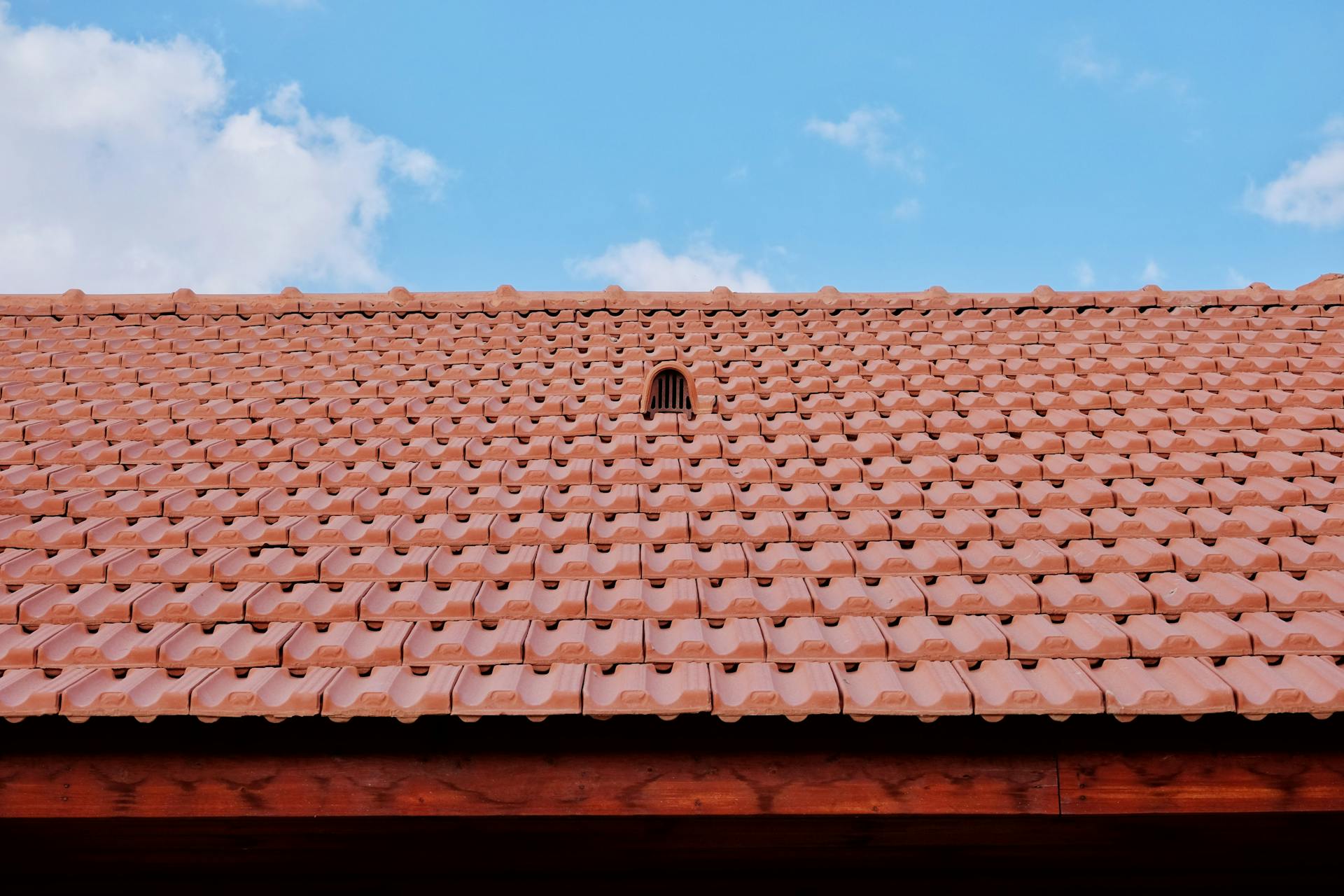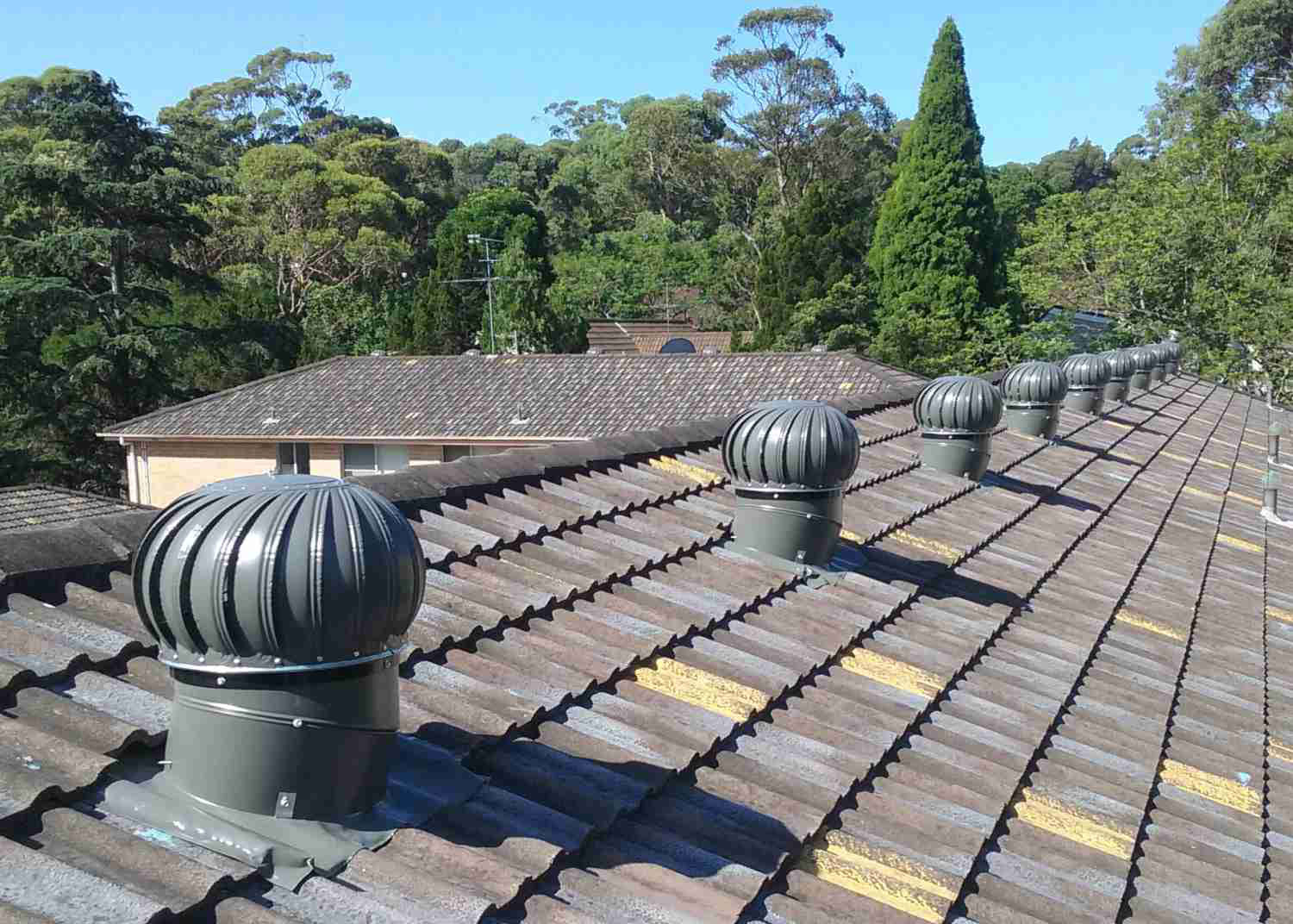Keeping your home cool and energy-efficient can be a big challenge, especially in Australia’s hot weather! Proper ventilation plays a huge role in maintaining indoor comfort, reducing energy bills, and preventing issues like mould and mildew. There are many options for roof ventilation, but Whirlybirds are becoming an extremely popular choice to cool homes without power! But are they really worth it? In this article, we’ll explore everything you need to know about
Whirlybird vents—how they work, pros, cons, installation process, cost, and more—to help you decide if they’re the right fit for your home!
What Are Whirlybird Vents?
Just in case you’ve never even heard of a Whirlybird before, let’s explain what they are first. Whirlybird vents, also known as turbine vents, are roof-mounted devices designed to improve airflow in attics and upper living spaces. These vents consist of a cylindrical structure with angled fins that spin when exposed to wind. The rotation creates a vacuum effect, which helps to pull out hot, stale air from inside your home and replace it with fresh air.
These vents gained popularity in hot and humid climates like Australia, but now Whirlybird vents are being used worldwide for their simplicity, effectiveness, and environmentally friendly design! They are typically made of lightweight, weather-resistant materials like aluminium or stainless steel, and they’re built to withstand harsh conditions while promoting better ventilation.
How Do They Work?
So, how can these vents cool your home down without using power? The magic happens when Whirlybirds use natural forces like wind and convection! When wind blows across the roof, it turns these fins, causing the turbine to spin. This spinning motion creates a vacuum effect, which draws hot, stale air out of the attic or roof space. As the hot air exits, cooler air from outside enters through soffit vents or other intake points, maintaining a continuous flow of fresh air.
Even in the absence of wind, Whirlybirds can still function effectively! This is due to convection, the natural process where hot air rises. The warm air inside the attic naturally moves upward and exits through the Whirlybird, while cooler air flows in to replace it.
Pros Of Whirlybirds
Whirlybird vents offer a lot of great advantages that make them a popular choice for homeowners who want to keep their homes cool without power.
Improved Airflow
Because they actively draw out hot air, Whirlybirds can reduce the temperature in attics and upper rooms, which makes your home more comfortable. This prevents heat buildup that can seep into living spaces and strain your air conditioning system.
Cost-Effective
Whirlybird vents don’t use power, so they can reduce your energy bills and save you money! Plus, they have low upfront costs and minimal maintenance needs, which makes them an affordable way to improve home ventilation!
Energy Efficiency
Whirlybird vents are highly energy-efficient because they rely solely on natural forces like wind and convection to operate, eliminating the need for electricity. Improving attic ventilation helps reduce the strain on HVAC systems, leading to lower energy consumption!
Durability
High-quality Whirlybirds are built to withstand extreme weather, including heavy rain, wind, and UV exposure, ensuring long-lasting performance.
Environmentally Friendly
Whirlybirds are powered solely by natural forces, which makes them an eco-conscious choice if you’re a homeowner who is looking to reduce their carbon footprint!
Cons To Using Whirlybird Vents
While Whirlybird vents have many benefits, they do have some drawbacks that should be mentioned so you can make an informed decision:
Dependency on Wind
How effective they are depends entirely on consistent wind or heat-driven convection. In areas with little to no wind, they may not perform as well!
Limited Cooling Capacity
Whirlybirds work well to reduce attic temperatures, but they aren’t a substitute for air conditioning if you live in an extremely hot climate. They’re most effective when combined with other cooling methods.
Noise Issues
If Whirlybirds are old, poorly installed or not of the greatest quality, they can start to produce a whirring noise, which could get annoying, especially in windy areas.
Aesthetic Concerns
Some homeowners feel that the appearance of Whirlybirds detracts from their home’s kerb appeal.
Maintenance Requirements
Although Whirlybird vents are pretty low maintenance, they do require occasional cleaning and inspections to make sure they function properly.
Whirlybirds vs Alternative Ventilation Systems

So we’ve looked at the pros and cons, but how do Whirlybird vents hold up when compared to other ventilation options? Well, Whirlybirds offer a cost-effective, eco-friendly alternative to other ventilation systems. Unlike electric fans, which consume energy, or solar-powered vents, which have higher upfront costs, Whirlybird vents operate passively using wind and convection. Static roof vents are affordable, but they lack the airflow efficiency of Whirlybirds, while ridge vents blend seamlessly with the roof but may not provide enough ventilation if you live in a hotter climate. These clever vents strike a balance between affordability and performance, offering durable, effective ventilation that reduces attic heat and moisture! While other systems have their good points, Whirlybirds are the best choice if you’re looking for a reliable, budget-friendly ventilation solution.
Installation Process
Installing a Whirlybird is a straightforward process that can be done by professionals or experienced DIYers. The first step is assessing the attic’s size to determine the number of vents needed, with larger spaces often requiring multiple units. Once the placement is planned—typically at high points on the roof where hot air accumulates—a hole is cut into the roof. The Whirlybird must then be securely mounted over the opening, and flashing is applied to create a watertight seal. Proper alignment is crucial to maximise airflow! While DIY installation is possible, professional installation guarantees correct placement and long-term durability.
How Much Do They Cost?

Whirlybird vents are an affordable ventilation option, which is another reason why they are so popular. The cost of a Whirlybird vent typically ranges from $50 to $150, depending on the material, size, and brand. Professional installation adds another $300 to $700 per vent, and this price also depends on a few factors, such as roof complexity and location. For those with DIY skills, installation costs can be minimised, but you need to make sure you have the proper
working at heights safety training and the right equipment! Maintenance expenses are low, often just for cleaning or minor repairs. Compared to other ventilation systems like solar-powered or electric fans, Whirlybirds offer excellent value, with low upfront costs and long-term savings, thanks to improved energy efficiency and reduced utility bills!
How To Maintain Whirlybirds
Maintaining a Whirlybird vent is straightforward and ensures it remains effective and long-lasting. Regular maintenance involves a few simple steps to keep the vent spinning smoothly and free of debris.
You’ll need to inspect the Whirlybird at least twice a year, ideally before summer and winter, to ensure it’s in good working condition. Look for visible signs of wear, such as dents, rust, or loose parts, which can compromise its performance! You’ll also want to regularly clean the turbine fins to remove any debris like leaves, dirt, or dust that may stop it from rotating. A soft brush or a gentle spray from a garden hose can effectively clean it up. Avoid using high-pressure washers, as they may damage the vent!
Check the vent’s bearings, as these are critical to its spinning motion. Over time, bearings may wear out or become stiff, affecting the turbine’s efficiency. Lubricate them with a silicone-based lubricant, or replace them if necessary! Don’t forget to check that the vent spins freely by manually turning it during inspection. If it sticks or feels obstructed, make sure you address the issue as quickly as possible!
With regular cleaning, lubrication, and checks, a well-maintained Whirlybird vent can provide years of reliable, cost-effective ventilation for your home.
Should You Get A Whirlybird?

Whether or not you should get a Whirlybird vent depends on your home’s specific needs, location, and budget. Whirlybird vents are a cost-effective and eco-friendly option for improving attic ventilation. They excel in hot, windy climates, where their wind-powered design can effectively draw out hot air and reduce attic temperatures. This not only enhances indoor comfort but also reduces the strain on your HVAC system, leading to long-term energy savings.
For environmentally conscious homeowners, Whirlybirds offer a sustainable solution that doesn’t rely on electricity, unlike solar or electric-powered alternatives! They’re also durable and low-maintenance, making them a great choice if you’re looking for a roof vent that is affordable and reliable.
But it’s also important to recognise their limitations. In areas with minimal wind, their effectiveness may be reduced. And while they help with airflow, they’re not a replacement for air conditioning in extremely hot climates. Combining Whirlybirds with other cooling solutions, like insulation or additional vents, can maximise their benefits!
Ultimately, a Whirlybird vent is a worthwhile investment if you want a practical, low-cost solution to improve ventilation. If you’re looking for a durable and efficient way to keep your home cooler and reduce energy costs, then a Whirlybird vent is a smart choice!


